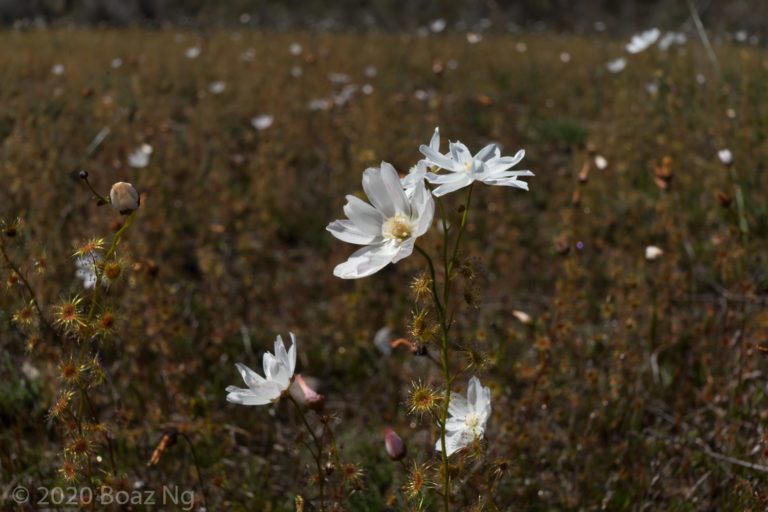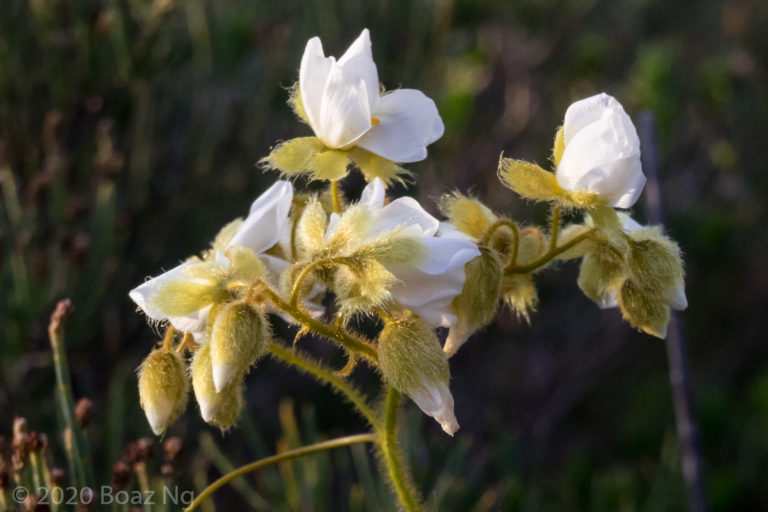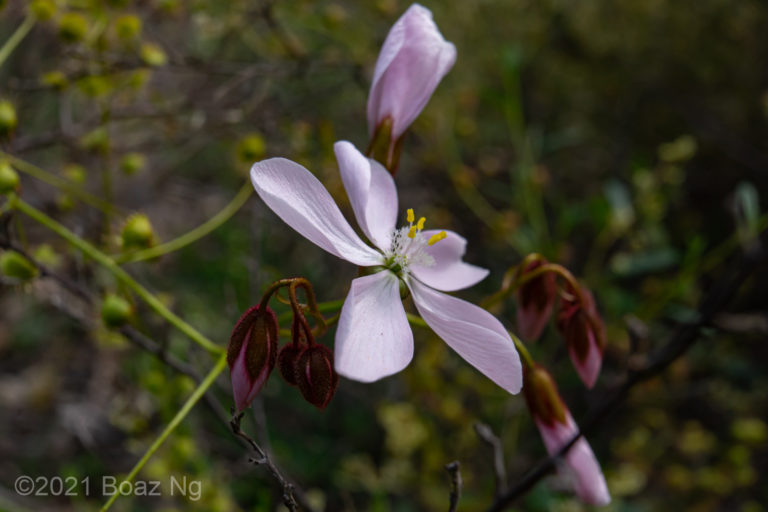The wikipedia page for Drosera lists an interesting use for sundews – in the Scottish Highlands, an extract of Drosera rotundifolia was used to prepare a yellow or purple dye. After some digging around, it appears that yellow was extracted from the leaves while purple was prepared from the roots. Recently, I’ve been pretty fascinated by natural dyes so of course I couldn’t resist trying this technique with my spare Drosera capensis plants.
Plant dyes typically work best on protein fibers such as wool or silk, but the ongoing project I’ve been working on uses cotton. Some extra preparation steps are needed to prepare cellulose fibers to accept the dye. First, a crochet square was simmered in soy milk, the proteins of which bind to the fibers to help accept the dye. After drying and curing for a week, the squares were then simmered in a premordant solution and cured wet in the fridge for another week. Mordants are metallic ions which help the dyestuff bind chemically to the fiber and the choice of mordant can alter the colour of the dye. I tested aluminium acetate at 6% weight of fiber and iron sulphate at 2% wof.
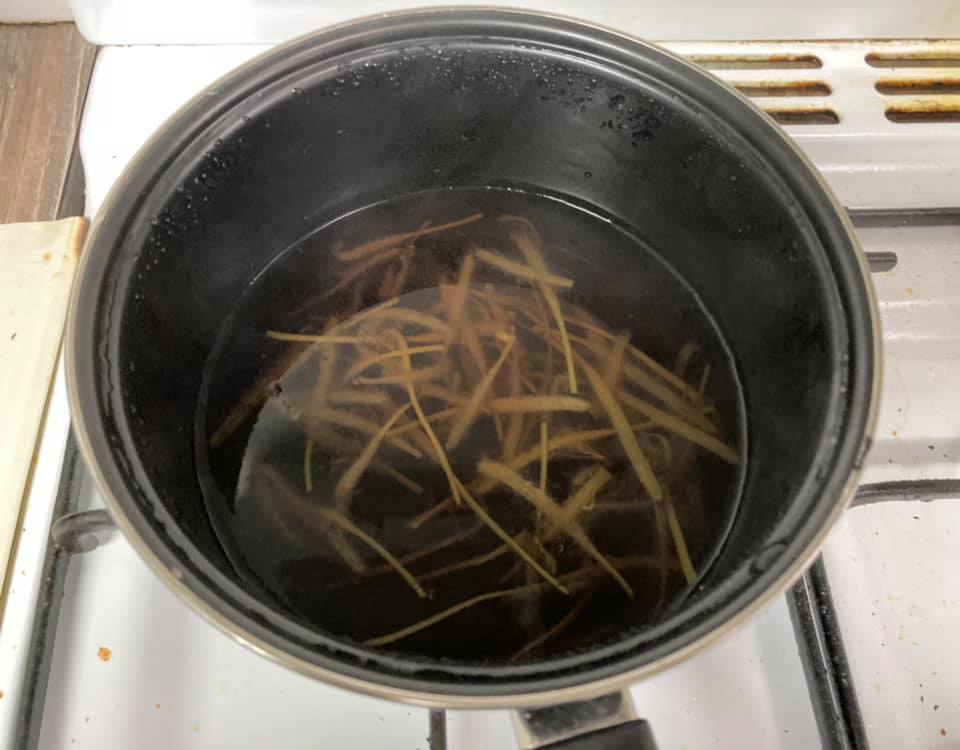
To produce the dye extract, fresh leaves were harvested from a pot of Drosera capensis and boiled in water for around an hour until a clear brown extract was obtained. For this dye, the pH of the solution has to be raised. Traditionally, this was done by adding ammonia but I used calcium hydroxide instead. Immediately after adding it, the solution turned dark brown with a yellow tone.
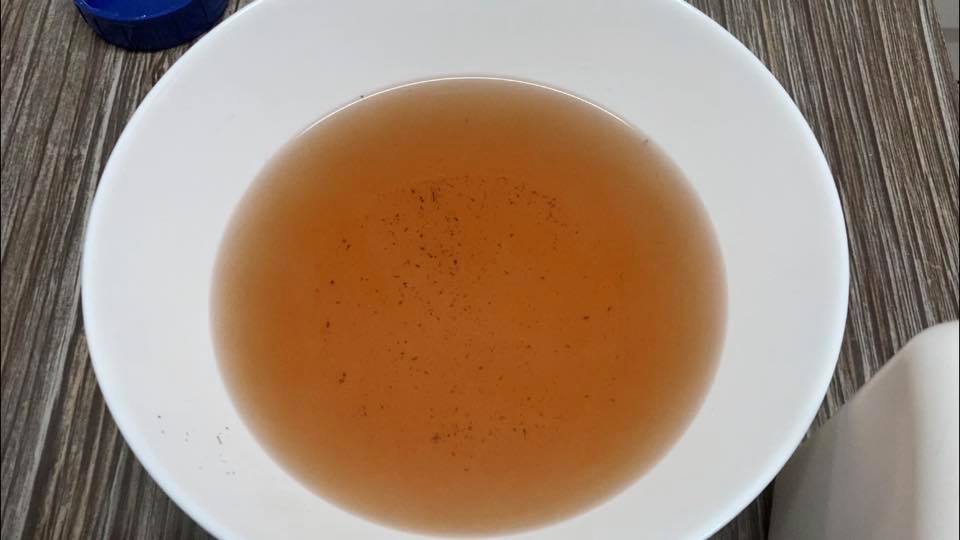
Strained extract 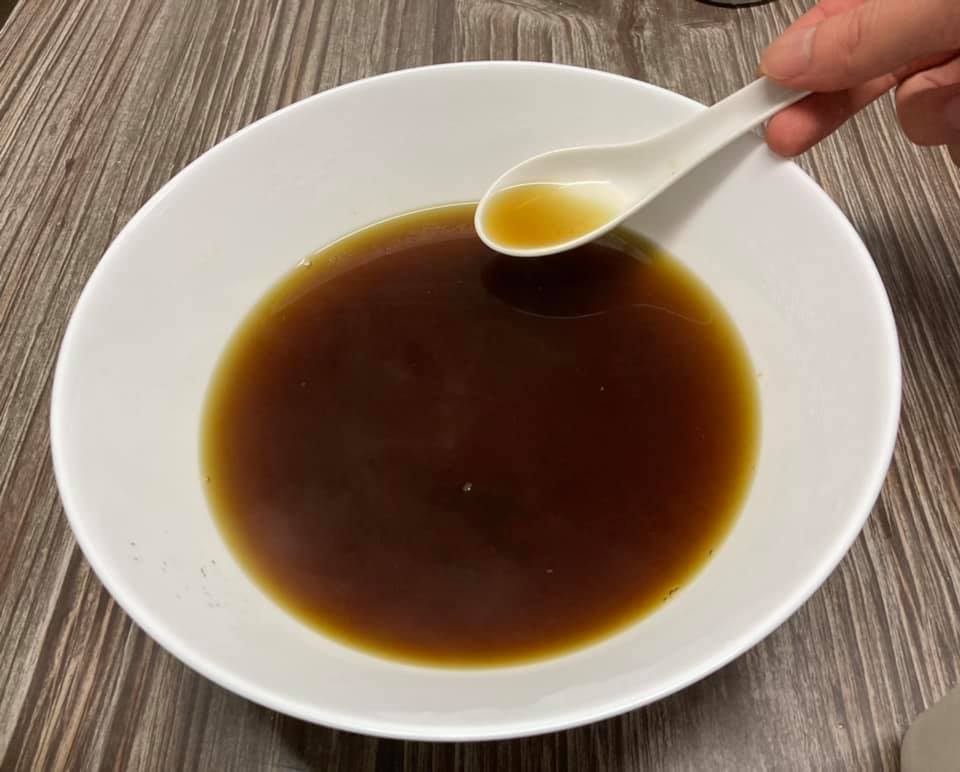
After adding Calcium hydroxide
The extract was poured into glass jars so that I could dye the cotton squares separately. The jars were put into a pan of boiling water and simmered for about an hour. Afterwards, the cotton squares were fished out, rinsed with a gentle soap and dried.
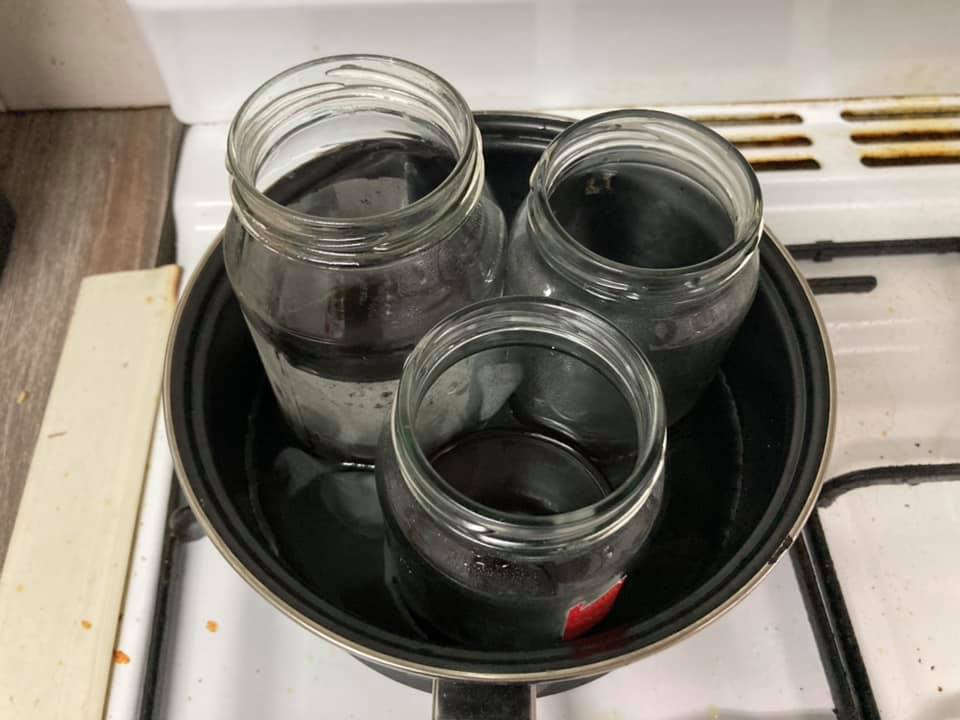
This fun dyeing project was a success, and I managed to get a bright yellow colour with the aluminium acetate mordanted cotton. Aluminium mordants are known to ‘brighten’ colours whereas iron ‘saddens’ the dye. As expected, the iron sulphate mordanted cotton produced a dark brown tone.
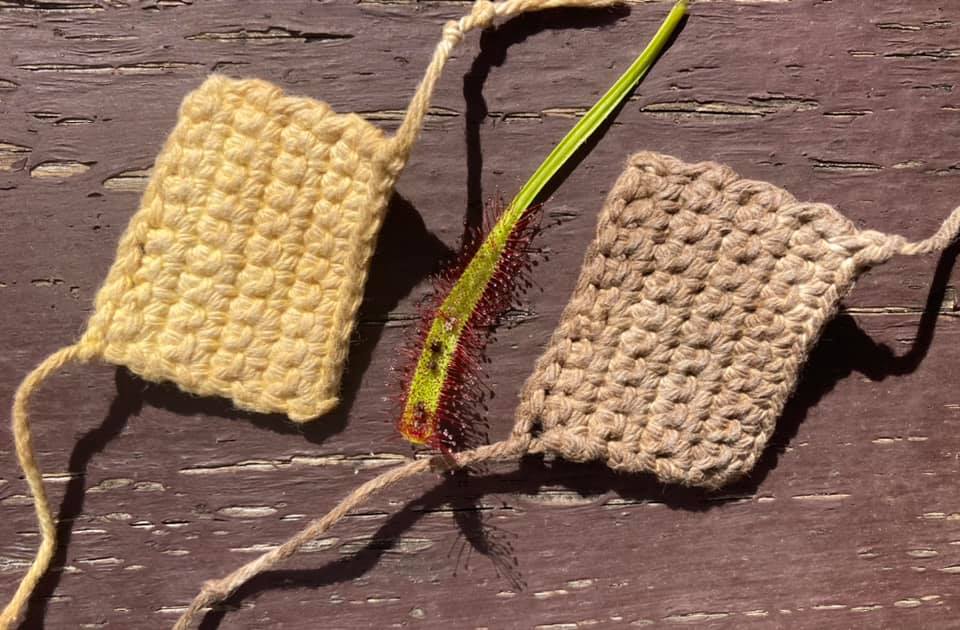
This was my first dyeing project and there is some room for improvement. The dyeing was not so even, especially in the center of the crochet samples where presumably the pre-treatment or dye was unable to penetrate. I will have to experiment with different treatment protocols to improve this result. Cotton is known to be difficult to accept plant dyes so perhaps next time I’ll try with a wool or silk fiber instead.

